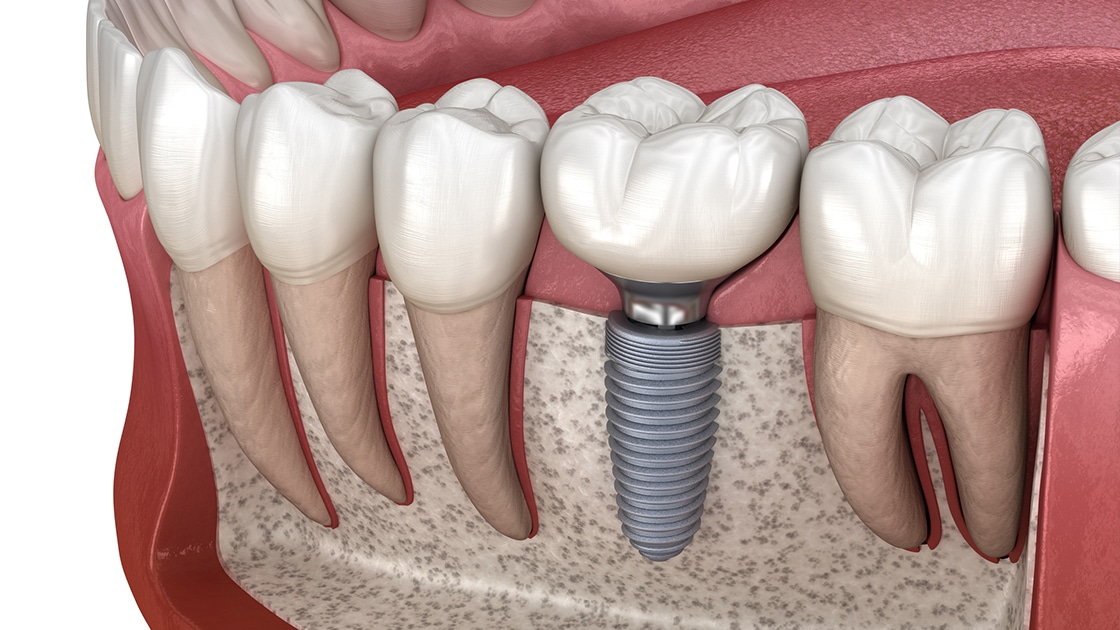The 7-Second Trick For Dental Sense
The 7-Second Trick For Dental Sense
Blog Article
Some Known Incorrect Statements About Dental Sense
Table of ContentsThe Main Principles Of Dental Sense The 20-Second Trick For Dental SenseThe 9-Minute Rule for Dental Sense4 Simple Techniques For Dental Sense
are medical gadgets operatively dental implanted into the jaw to bring back a person's capability to chew or their appearance. They supply assistance for synthetic (fake) teeth, such as crowns, bridges, or dentures. When a tooth is lost as a result of injury or illness, a person can experience problems such as fast bone loss, faulty speech, or modifications to eating patterns that lead to discomfort.Oral dental implant systems are composed of a dental implant body and dental implant abutment and may also include an abutment addiction screw. Wisdom tooth cavity. The oral implant body is surgically put in the jawbone instead of the tooth's origin. The dental implant abutment is usually attached to the implant body by the abutment fixation screw and prolongs with gum tissues right into the mouth to support the connected artificial teeth
(https://dentalsense1.bandcamp.com/album/dental-sense)Structure of The Oral Implant System picking dental implants, speak to your dental copyright concerning the possible benefits and risks, and whether you are a candidate for the treatment. Points to take into consideration: Your overall wellness is an important factor in identifying whether you are a good candidate for dental implants, just how long it will certainly require to heal, and the length of time the implant might stay in location.
Smoking may impact the healing process and lower the lasting success of the implant. The healing procedure for the implant body might take several months or longer, during which time you generally have a momentary abutment instead of the tooth. the oral implant procedure: Thoroughly follow the oral health guidelines offered to you by your oral company.
Some Known Facts About Dental Sense.
Implant failing can result in the demand for one more surgery to deal with or replace the dental implant system. Brings back the capability to eat Restores aesthetic look Assists keep the jawbone from reducing due to bone loss Protects the health of the surrounding bone and gums Assists keep nearby (nearby) teeth secure Boosts lifestyle Damages to bordering natural teeth during implant placement Injury to the surrounding cells throughout surgical procedure, such as sinus perforation Injury throughout surgical treatment (for instance, fracture of bordering jawbone) Inadequate function, such as seeming like the teeth do not bite together generally A sensation that the tooth is loose or turning in area resulting from an abutment screw loosening Implant body failure (looseness of the implant body) due to systemic infection, which may be most likely in clients with unrestrained diabetes mellitus due to local infection in bone and gum tissues sustaining the dental implant body as a result of delayed recovery, which might be more probable in patients who smoke Difficulty cleaning up the periodontals around the implant, causing inadequate dental hygiene Untreated periodontal disease Post-surgical pins and needles due to nerve impingement or damages Constantly inform wellness treatment carriers and imaging service technicians that you have oral implants prior to any kind of magnetic vibration imaging (MRI) or x-ray procedures.
FDA is not knowledgeable about any type of unfavorable events reported for MRI or x-ray treatments with dental implants. Oral implants systems are typically made of products that follow worldwide consensus standards of the International Organization for Standardization (ISO) or ASTM International. These requirements have details of what makes a safe product.

An oral implant is a framework that replaces a missing out on tooth. With screw-like tools, the specialist inserts an implant right into the jawbone, and it acts as a support for a man-made tooth, called a crown. A gadget called an abutment connects the synthetic tooth to the oral implant. The crown is tailor-made to fit the individual's mouth and match the shade of their teeth.
The smart Trick of Dental Sense That Nobody is Talking About
Some people are not qualified for oral implant surgical treatment. It is for oral doctors to run on people with: acute illnessuncontrollable metabolic diseasebone or soft tissue disease or infectionIf these problems are settled, a person can have the surgical treatment. In, oral doctors avoid operating on people with: If individuals with any one of the above go great post to read through oral implant surgical procedure, there is a greater danger of the implant failing.

Dental implant surgical treatment is an individualized procedure. Give you time to heal. Connect the message and final crown, bridge or denture.
Next off, your doctor will very carefully position the oral implant into your jaw. Finally, your cosmetic surgeon will certainly rearrange your gums and close the laceration with stitches. If your dental implant is near the front of your mouth, your dental professional will make a momentary tooth for you to wear until you heal. This way, you won't have a gap in your smile while you recover.
The Ultimate Guide To Dental Sense
Your company can inform you what to anticipate in your situation. Throughout the recovery stage, your jawbone must fuse to the oral implant. This process, called osseointegration, is important for stability and long-lasting success. This procedure can take anywhere from 3 to nine months. In some cases, it might take longer.
Once your dental implant heals, your dental practitioner can attach the joint (tiny port blog post) and your final repair (crown, bridge or denture). This usually takes regarding one hour to finish and may call for a second minor surgical treatment. You shouldn't really feel any pain throughout your oral implant treatment because your provider will certainly use medicine to numb your gum tissues.
Report this page